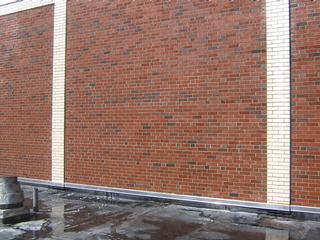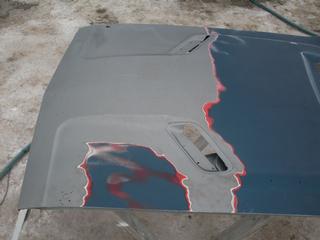TRUE GRIT
SODA BLASTING
WE TAKE IT OFF
JERRY DENNISON
FOR FREE ESTIMATE CALL OR EMAIL
or
truegrit111@aol.com
Click HERE to Link to WIKIPEDIA and learn more about Soda Blasting
WE ARE MOBILE - ALL OF CENTRAL OHIO
****APPLICATIONS****
* Auto Restore *
**** PROCESSES USED ****
* Soda *
* Walnut Shell *
Environmentally Safe......Go Green
FDA, USDA and OSHA Approved
"What is Soda Blasting?"
Soda blasting is an environmentally friendly way of removing paint, dirt, coatings, and other surface contaminants that will not cause damage to the surfaces being cleaned.
Soda blasting is a non-abrasive action. The action of sodium bicarbonate will not cause heat build up, sparks, or abrasion to the surface being cleaned.
Soda blasting was used by engineers looking for ways to clean and restore the Statue of Liberty. They had many concerns involving issues of the environment and protection of the Statue of Liberty itself. Use of any abrasive material to clean the surface would have been harmful to the soft copper plates. Used blast media waste in the surrounding water was also a concern. Soda blasting was created because it would not only do the job while having a minimal impact on the waterways and harbor but it was also non-abrasive.
"How does soda blasting work and what are its advantages?"
The sodium bicarbonate used in the blasting process is a larger particle than the baking soda used in the food industry, although it is the same purity. The particles (baking soda) are propelled by compressed air through specialized blasting pots. The blasting pots use air pressure that can be varied from 20 psi on soft surfaces to 120 psi on harder surfaces. The now pressurized sodium bicarbonate particles remove coatings by the energy released when the particles explode as they contact the surface being cleaned.
Sand blasting, on the other hand, removes the coatings by wearing it away (abrasively). This is also the result when the sand hits the base surface being cleaned; the base surface is worn away and damaged. Sodium bicarbonate has a non-abrasive action that allows it to be used on surfaces that the currently popular abrasive media (sand blasting) would damage i.e.: aluminum, stainless steel, brick, stone, glass, fiberglass, wood, plastic, seals, bearings, splines, radiator cores, and hydraulic cylinders. Since there is no heat build up warped metal is eliminated. The non-flammable properties allow sodium bicarbonate to be used in the petroleum industry where other methods posed a higher risk. Sodium bicarbonate breaks down hydrocarbons, which makes soda blasting an excellent method of cleaning engines, engine parts, and other areas where oil and grease are present.
Another major advantage of soda blasting is that it does not break down the surface tension of metals, thus the problem of flash rusting is eliminated. Sodium bicarbonate can act as a rust inhibitor, which will leave a protective coating on the surface being cleaned. This allows for time to pass before the surface has to be painted. This is unlike a sand blasted surface that must be painted immediately. When the time arrives to paint the surface, the protective coating (soda) can be removed by an application of a vinegar/water mixture.
"Tell me about Graffiti removal?"
The removal of graffiti is a difficult and costly operation using many of the conventional methods available. Soda blasting provides a very valuable alternative to these methods. Because it is a non-abrasive media, soda blasting can be used to remove graffiti on brick, sandstone, marble, and other sensitive surfaces without leaving any evidence behind. The addition of a wet blasting nozzle provides a nearly dust free method of cleaning. Care must be taken when setting the pressure, airflow, and media flow as damage may occur from improper application, thus testing in a non-visual area is still advised.
"What about clean up?"
Sodium bicarbonate has a pH of 8.4 and is safe in most wastewater treatment systems. Sodium bicarbonate can be neutralized by either a vinegar/water solution or just water dilution.
You can Blast wood, brick, stone, iron, marble, aluminum, fiberglass, brass, copper, granite, hardened steel, limestone, sheet metal, frames, cast iron, glass and steel plate. Just use the right nozzle. It is used to engrave delicate artwork on sandstone, etch glass, carve granite or engrave marble headstones.
With the right media it will clean soft wood, hardened brick, ceramic tile, fiberglass, cement blocks CMU's, stucco or even gunite.
GRAFFITI REMOVAL


PAINT REMOVAL

MARINE
AUTO

ARCHITECTURE
